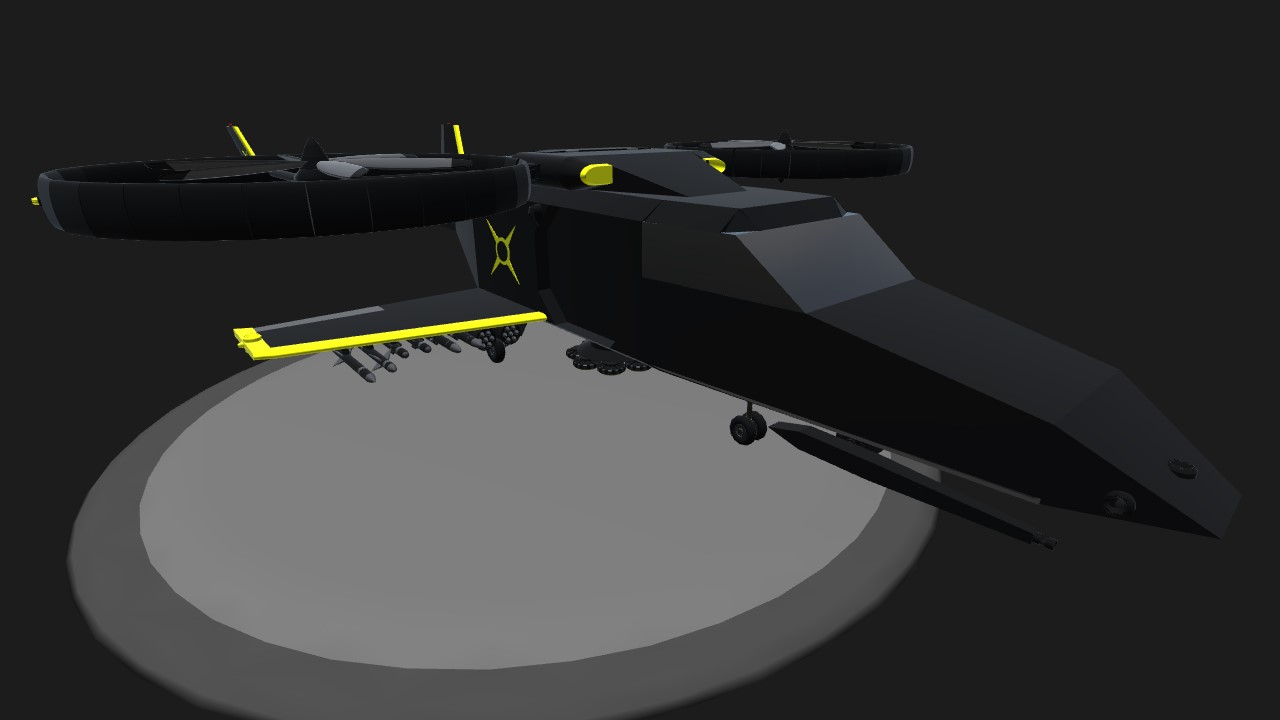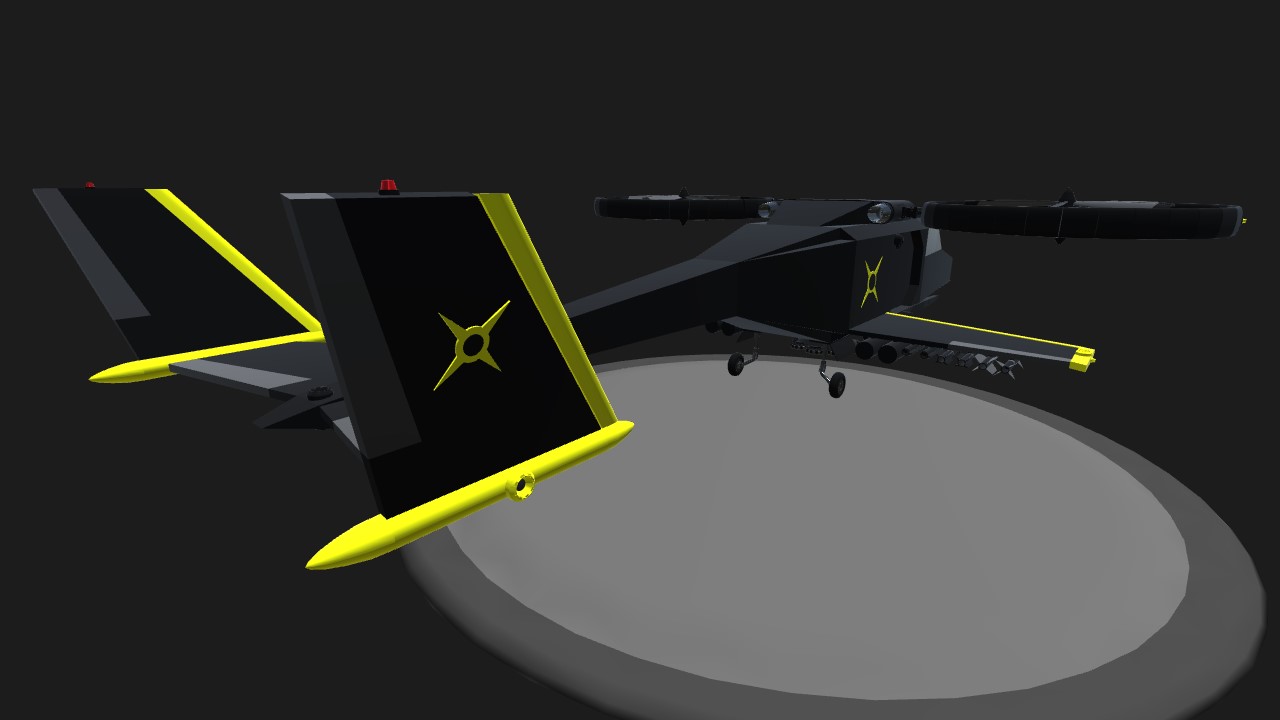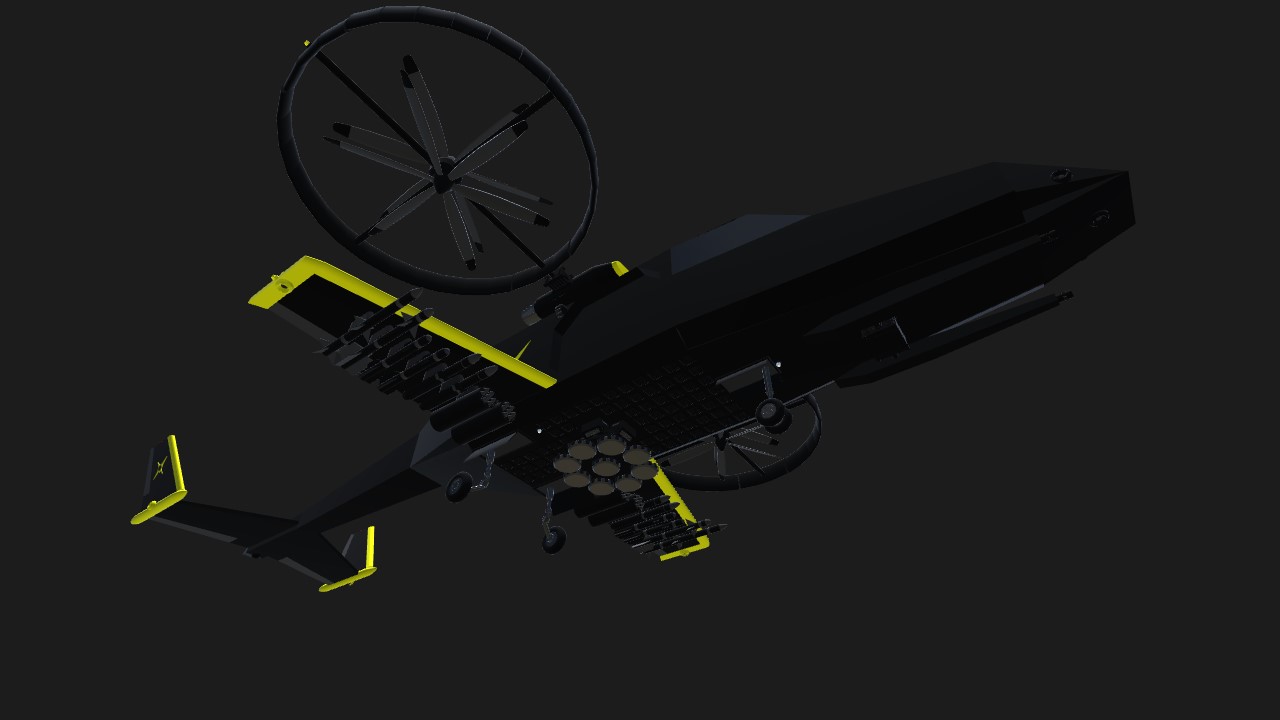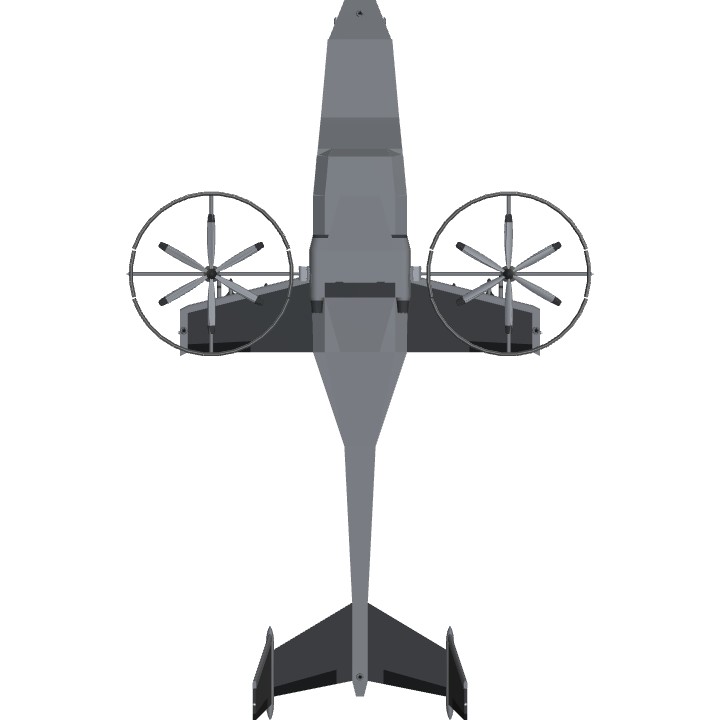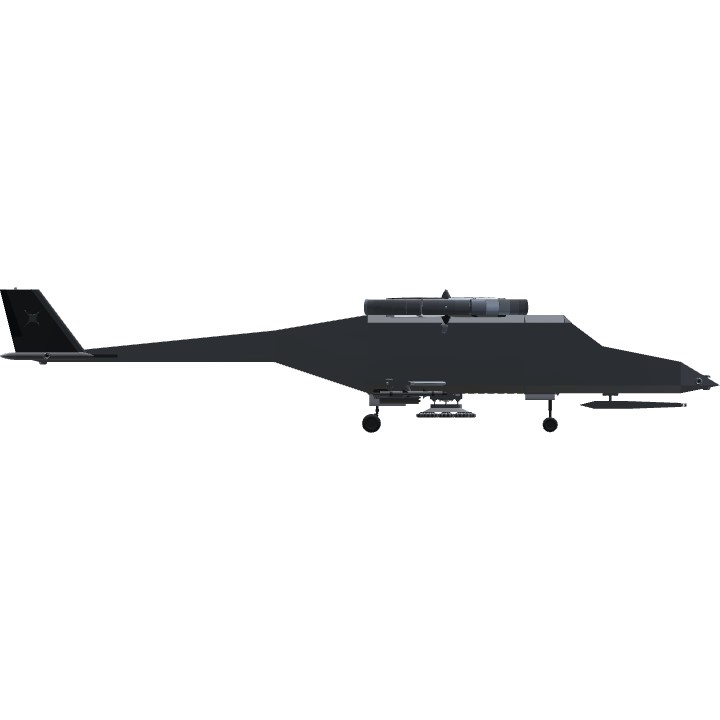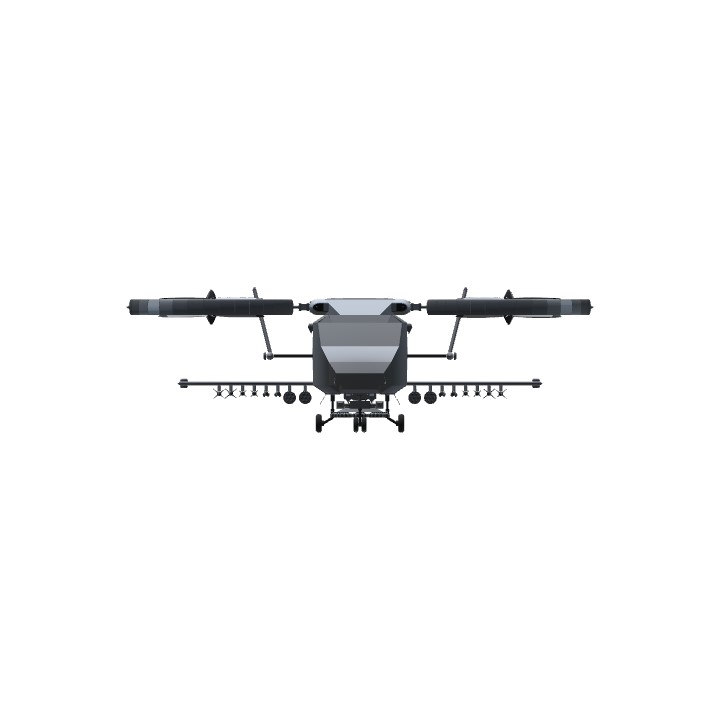UPDATE:
The cockpit canopy has been changed, the munitions load has been changed. more gyroscopes have been added, and a new crane function has been added.
HISTORY:
The UAH-1 Terrador is an utility/attack helicopter used for carrying soldiers and supplies to and from the battlefield through the air. The Terrador performs double-duty as a gunship thanks to a set of gattling guns mounted to the nose and sides of the cabin section of the fuselage. The heavy weight makes the Terrador burn through its fuel more quickly, so turbo props are used instead of rockets because they require less fuel to run. The Terrador is fairly maneuverable, but not as maneuverable as a star fighter, so it cannot evade missiles as easily. To compensate for the Terrador's lack of missile evasion capabilities and improve its protection, stealth counter-measures were installed, thus making the Terrador a much tougher target for enemies to hit. The Xenans often use the Terrador for patrols, infiltrations, and extractions, but it does have limited anti-air capabilities that allow the Xenans to engage airborne enemies when necessary.
ARMAMENT:
28x short ranged unguided air-to-ground rockets
4x medium ranged radar guided fire-and-forget air-to-ground inferno missiles
4x heavy long ranged radar guided fire-and-forget air-to-ground cleaver missiles
2x medium ranged radar guided air-to-air guardian missiles
2x long ranged radar guided fire-and-forget air-to-air interceptor missiles
Dual 50 .cal KVA-2 MKII machine guns
OPERATION INSTRUCTIONS AND ADVICE:
Action group 1 starts the rotor engines as well as engages the gyroscopes' auto-orient stability function. These are necessary for flight.
Action group 2 engages the gyroscopes' control inputs for pitch, roll, and yaw. These are "gyroscope-assisted" inputs. Although it is possible to fly the helicopter without the gyroscope-assisted inputs, the helicopter responds better with them.
Action group 3 engages the VTOL jet engines. These engines are used to give the helicopter a boost of speed and/or lift when needed.
Action group 4 engages the RCN nozzles, which are useful for controlling the helicopter in the event that the control surfaces get damaged. They are also useful for controlling the helicopter in environments with low air density.
Action group 5 illuminates the exterior lights.
Action group 6 jettisons all munitions.
Action group 7 activates the electromagnets which are used for picking-up payloads with a ferro-magnetic surface. The electromagnets themselves are attached to a platform, which in turn, is attached to a crane mechanism that can be raised and lowered with the VTOL slider. Move the slider down to lower the crane or move the slider up to raise the crane. The crane will only respond with the slider in positions below the central mark.
Action group 8 primes all munitions.
The trim slider aims the gun turret up or down. Move the trim slider up to aim up or move the trim slider down to aim down. Do not aim the guns too far upward otherwise they might shoot into the fuselage.
Specifications
General Characteristics
- Created On Windows
- Wingspan 48.8ft (14.9m)
- Length 75.5ft (23.0m)
- Height 15.2ft (4.6m)
- Empty Weight 24,957lbs (11,320kg)
- Loaded Weight 29,392lbs (13,332kg)
Performance
- Power/Weight Ratio 2.752
- Horse Power/Weight Ratio 0.68
- Wing Loading 90.3lbs/ft2 (440.8kg/m2)
- Wing Area 325.6ft2 (30.2m2)
- Drag Points 17720
Parts
- Number of Parts 373
- Control Surfaces 6
- Performance Cost 2,036

